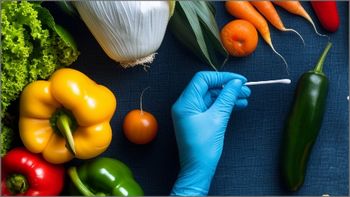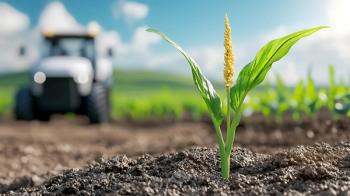
- September 2023
- Volume 19
- Issue 9
- Pages: 9
Magnetic Nanoparticles Used for PAH Detection in Water & Fish Samples
A new method of extracting and analyzing polycyclic aromatic hydrocarbons (PAHs) from water and fish samples has been created.
In a recent study published in the Journal of Chromatography A, researchers from the Institute of Agricultural Quality Standards and Testing Technology Research presented a method capable of extracting and analyzing polycyclic aromatic hydrocarbons (PAHs) from water and fish samples (1). The technique introduces naphthalene-modified magnetic nanoparticles (Fe3O4@Nap) that improve the precision, sensitivity, and simplicity of the extraction process (1).
For this study, a new one-step surface modification protocol was deployed. Naphthalene-6-phosphate was directly immobilized onto the Fe3O4 nanoparticles, harnessing the specific chelation interaction between phosphate groups and metal ions on the Fe3O4 surface. The authors used this approach to yield nanoparticles with hydrophobicity and π-π conjugative effects. As a result, the nanoparticles were highly effective in capturing PAHs.
Under optimized conditions, the Fe3O4@Nap-based MSPE/gas chromatography–tandem mass spectrometry (MSPE/GC–MS/MS) method displayed linearity, precision, and accuracy for both water and fish samples. It was also an inexpensive alternative to traditional solid-phase extraction (SPE) materials because of the cost of the raw materials for the Fe3O4@Nap nanoparticles (1). This new method allows for large-scale production, making it more applicable to an industry setting.
Compared to other reported techniques, this approach also reduced the time required for sample preparation, making it an attractive option for PAH detection in environmental water and fish samples (1). The method offers an alternative solution that can help scientists and government agencies safeguard the environment and improve public health.
Reference
(1) Peng, X.; Liu, L.; Hu, X.; et al. Facile Fabrication of Naphthalene-Functionalized Magnetic Nanoparticles for Efficient Extraction of Polycyclic Aromatic Hydrocarbons from Environmental Water and Fish Samples. J. Chromatogr. A 2023, 1706, 464229. DOI:
Articles in this issue
over 2 years ago
Advances in Multiwavelength Absorbance Detectionover 2 years ago
The Paradox of Sustainability in Separation Scienceover 2 years ago
Event Preview: ISSS 2023over 2 years ago
LCGC Blog: Resolving Resolutionover 2 years ago
Vol 19 No 9 The Column September 2023 Europe & Asia PDFover 2 years ago
Vol 19 No 9 The Column September 2023 North American PDFNewsletter
Join the global community of analytical scientists who trust LCGC for insights on the latest techniques, trends, and expert solutions in chromatography.




